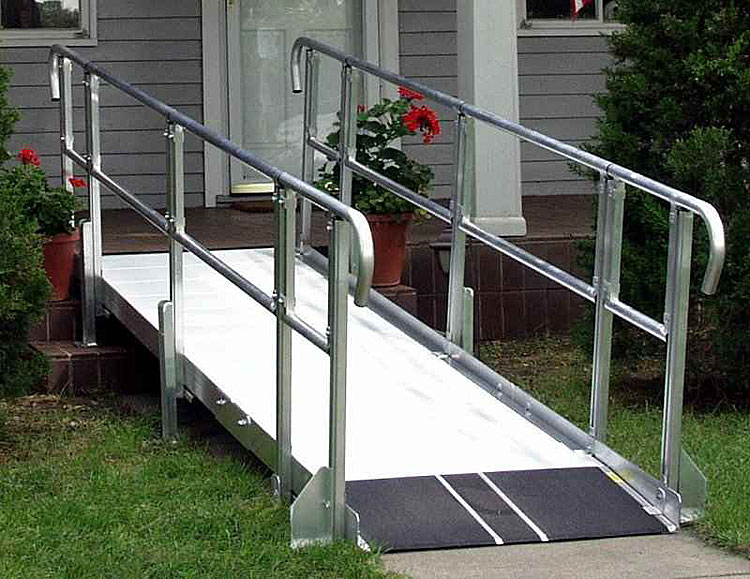By Lucy Wyndham
 Millions of adults in America live with a disability, but many struggle with basic daily activities around the home because of features designed with only able-bodied people in mind. Whether you’ve experienced a life-changing event, have been living with your diagnosis for years, or just want to disability-proof your home for friends, relatives, and your future self, thinking about accessible design ideas when remodeling your home is essential.
Millions of adults in America live with a disability, but many struggle with basic daily activities around the home because of features designed with only able-bodied people in mind. Whether you’ve experienced a life-changing event, have been living with your diagnosis for years, or just want to disability-proof your home for friends, relatives, and your future self, thinking about accessible design ideas when remodeling your home is essential.
•••
The Principles of Universal Design
 If you, a family member, or regular visitor already has a disability, your remodeling plans can be directed and shaped by your specific needs. Textured surfaces and smart, speaking devices can help those with vision impairments; adjustable height work surfaces and level thresholds aid those with physical mobility difficulties.
If you, a family member, or regular visitor already has a disability, your remodeling plans can be directed and shaped by your specific needs. Textured surfaces and smart, speaking devices can help those with vision impairments; adjustable height work surfaces and level thresholds aid those with physical mobility difficulties.
However, if you are simply looking to improve accessibility in and around your home, then reading up on “universal design principles” is a good place to start. These principles aim to produce buildings and spaces that are equally accessible for people with and without disabilities, and for people of all ages.
There are some features that are undeniably easier if you’re building from scratch: wide doors and ramps to accommodate wheelchair or walking frame users, for example. But with some creative thinking, there’s many ways you can remodel your home to make it more accessible.
Getting a Handle on Things
 One very easy change which certainly doesn’t require big structural alterations is to subject drawer handles, faucets, and door knobs to the “closed-fist test”, which basically does what the name suggests: if it can be operated using a closed fist, it can be operated by almost anyone, no matter their impairment. This is a fantastic way to empower and enable those who may otherwise have difficulties with opening and shutting doors or cabinets and make your home accessible.
One very easy change which certainly doesn’t require big structural alterations is to subject drawer handles, faucets, and door knobs to the “closed-fist test”, which basically does what the name suggests: if it can be operated using a closed fist, it can be operated by almost anyone, no matter their impairment. This is a fantastic way to empower and enable those who may otherwise have difficulties with opening and shutting doors or cabinets and make your home accessible.
Lever and bar shaped handles are generally better than round knobs, and think about incorporating textured finished or color-coding to help those with vision problems. It is, however, important to have a secure fastening method for any cupboards or doors, which need to be pet or child proof.
Upgrading your bathroom
Remodeling your bathroom is one room that can be straightforward but make a world of difference to everyone visiting or living in your home. Try a sleek and contemporary wetroom design: this removes the need for climbing into a shower tray or bath and gives plenty of room for caregivers to assist with washing. It’s also great for maximizing the space in your bathroom, as it eliminates the need to design things around pre-formed shower tray shapes.
Incorporating rails and grab-handles at the point of design as towel rails or lighting fixtures means they provide reassurance but do not look obtrusive, and choosing non-slip tiles and surfaces ensures better grip for all.
Keeping accessibility and universal design principles in mind when remodeling all or part of your home can be a really great way to make your rooms welcoming and usable for everyone who lives there or visits; and can give you peace of mind for the future for whoever or whatever may come your way.

